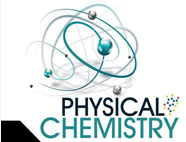


 علم الكيمياء
علم الكيمياء 
 الكيمياء التحليلية
الكيمياء التحليلية 
 الكيمياء الحياتية
الكيمياء الحياتية 
 الكيمياء العضوية
الكيمياء العضوية 
 الكيمياء الفيزيائية
الكيمياء الفيزيائية
 الكيمياء اللاعضوية
الكيمياء اللاعضوية 
 مواضيع اخرى في الكيمياء
مواضيع اخرى في الكيمياء
 الكيمياء الصناعية
الكيمياء الصناعية |
أقرأ أيضاً
التاريخ: 11-7-2019
التاريخ: 12-9-2019
التاريخ: 22-10-2019
التاريخ: 28-6-2019
|
When chemists make complex new compounds in the laboratory, they publish the method for making them in a chemical journal, giving their full systematic names in the experimental account, however long and clumsy those names may be. But in the text of the paper, and while talking in the laboratory about the compounds they have made, they will just call them ‘the amine’ or ‘the alkene’. Everyone knows which amine or alkene is meant because at some point they remember seeing a chemical structure of the compound. This is the best strategy for talking about almost any molecule: draw a structure, then give the compound a ‘tag’ name like ‘the amine’ or ‘the acid’. In written chemistry it’s often easiest to give every chemical structure a ‘tag’ number as well. To illustrate what we mean, let’s talk about a recent drug synthesis.
This potential anti-obesity drug 1, which might overcome insulin resistance in diabetics, was recently made at Abbott laboratories from a simpler intermediate 4. In the published work the drug is called ‘a selective DGAT-1 inhibitor’ but that doesn’t mean much to us. In the text of the paper, they refer to it by its compound number 1. How much more sensible than using its systematic name: trans-(1R,2R)-2-(4′-(3-phenylureido) biphenylcarbonyl) cyclopentane carboxylic acid. The simpler intermediate they call ‘the ketoacid 4’ or ‘the aryl bromide 4’ or ‘the free acid 4’ depending on what aspect of its structure they want to emphasize. Notice that in both cases a clear diagram of the structure appears with its number.



|
|
|
|
التوتر والسرطان.. علماء يحذرون من "صلة خطيرة"
|
|
|
|
|
|
|
مرآة السيارة: مدى دقة عكسها للصورة الصحيحة
|
|
|
|
|
|
|
دراسة تستعرض آلام السجناء السياسيين في حقبة البعث المجرم في العراق
|
|
|